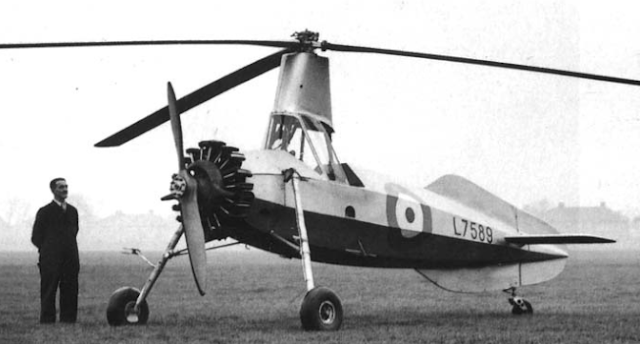Although the name of Emile Fayolle has fallen into oblivion relatively recently, it should be noted that this pilot was sufficiently representative of the commitment of the French airmen who after the defeat of 1940 chose to join England and General De Gaulle to form the backbone of what would become the French Free Air Forces. Besides, Fayolle gave his life for the freedom of France. Back on the life of a driver like no other.
Émile Fayolle was born on 8 September 1916 at Château Hauterive in a family of the upper middle class Auvergne. He was, moreover, the grandson of Marie-Emile Fayolle, Marshal of France, then at the front at the time of the birth of his grandson. The young Emile grew up in a family where education and culture are omnipresent. Very close to this illustrious grandfather, he is only 12 years old when he dies. Émile is then a brilliant young high school student but also a turbulent teenager. Since his younger years, he is passionate about the aviation that he discovered at the age of barely 6 years during an air meeting.
Like his father before him, Émile Fayolle nevertheless turned towards the career of engineer after obtaining his baccalauréat at the age of 17 years. He graduated in June 1938 at the age of 21 and joined the Air Force with the firm intention of becoming a fighter pilot. When the Second World War breaks out Émile is still in formation, he continues this one. It is in North Africa when the Franco-German armistice of 1940 is signed. With the help of his comrades (including the future Commander Mouchotte), Sergeant-Chef Fayolle decided to join Gibraltar, a British territory, on a single-engine Caudron Simoun.
Fifteen days later, his companions and he arrived in the south of England aboard a fishing boat chartered specially by the Royal Navy. He was sent back to a flying school where he also had to deepen the language of Shakespeare urgently. For Émile Fayolle it is quite simple, his grandfather had initiated it. Appointed to the rank of Warrant Officer, he was paid in mid-September 1940 to Squadron 40 of the Royal Air Force then flying on twin-engine Bristol Blenheim Mk-IV night fighter. This unit provides Northern Air Defense of the United Kingdom, Scotland.
 After a few combat missions, in particular against German reconnaissance twins, Émile Fayolle was transferred at the end of December 1940 to the 249 Squadron on single-engine fighter planes Hawker Hurricane Mk-IIA. And this is where his legend begins. If he does not defeat any enemy aircraft, then he is reputed to engage in combat with everything that flies and carries the German colors. A few weeks later, he rejoined Squadron 242, which has the distinction of hosting Canadian and French pilots flying on Hurricane.
After a few combat missions, in particular against German reconnaissance twins, Émile Fayolle was transferred at the end of December 1940 to the 249 Squadron on single-engine fighter planes Hawker Hurricane Mk-IIA. And this is where his legend begins. If he does not defeat any enemy aircraft, then he is reputed to engage in combat with everything that flies and carries the German colors. A few weeks later, he rejoined Squadron 242, which has the distinction of hosting Canadian and French pilots flying on Hurricane.He then participated in all-time hunting missions against the German bombers that hit England and Wales on a daily basis. On May 11, 1941, Émile Fayolle descended, alone, a twin-engine Heinkel He-111 before the latter had time to drop his bombs. The plane of the Luftwaffe explodes in full flight. A few weeks later, he married a young Briton he had met a few months earlier.
At the end of 1941, after passing through two other units of the RAF, Lieutenant Emile Fayolle joined the Squadron 340, the embryo of the French Free Air Forces. Within this unit he descends two enemy aircraft including an average Junkers Ju 88 bomber.
On August 1, 1942, he was appointed commander by the FAFL but also Squadron Leader by the RAF. He must therefore leave the 340 Squadron for the 174 Squadron equipped with Hurricane Mk-IIB for bombing. At the controls of these aircraft he participated in strikes against the German positions in Normandy and in Nord-Pas-de-Calais. A few days after arriving at the unit, he participated in the air coverage of Operation Jubilee, an attempt to disembark Anglo-Canadian troops on the Normandy coast between Dieppe and Le Tréport. It is above this region that he was shot down by the Luftwaffe on 19 August 1942.
Buried in the military square of the communal cemetery of Hautot s / Mer, his grave will not be anonymated until 1998. It is noted that fifteen years earlier, in June 1983 his name was given to the Air Base 745 D'Aulnat, the current headquarters of the aeronautics industry.
Émile Fayolle was elevated to the title of Companion of the Liberation and rank of Chevalier of the Legion of Honor posthumously in both cases by General De Gaulle in 1945. He was also recipient of the Distinguished Flying Cross.







0 commentaires :
Post a Comment